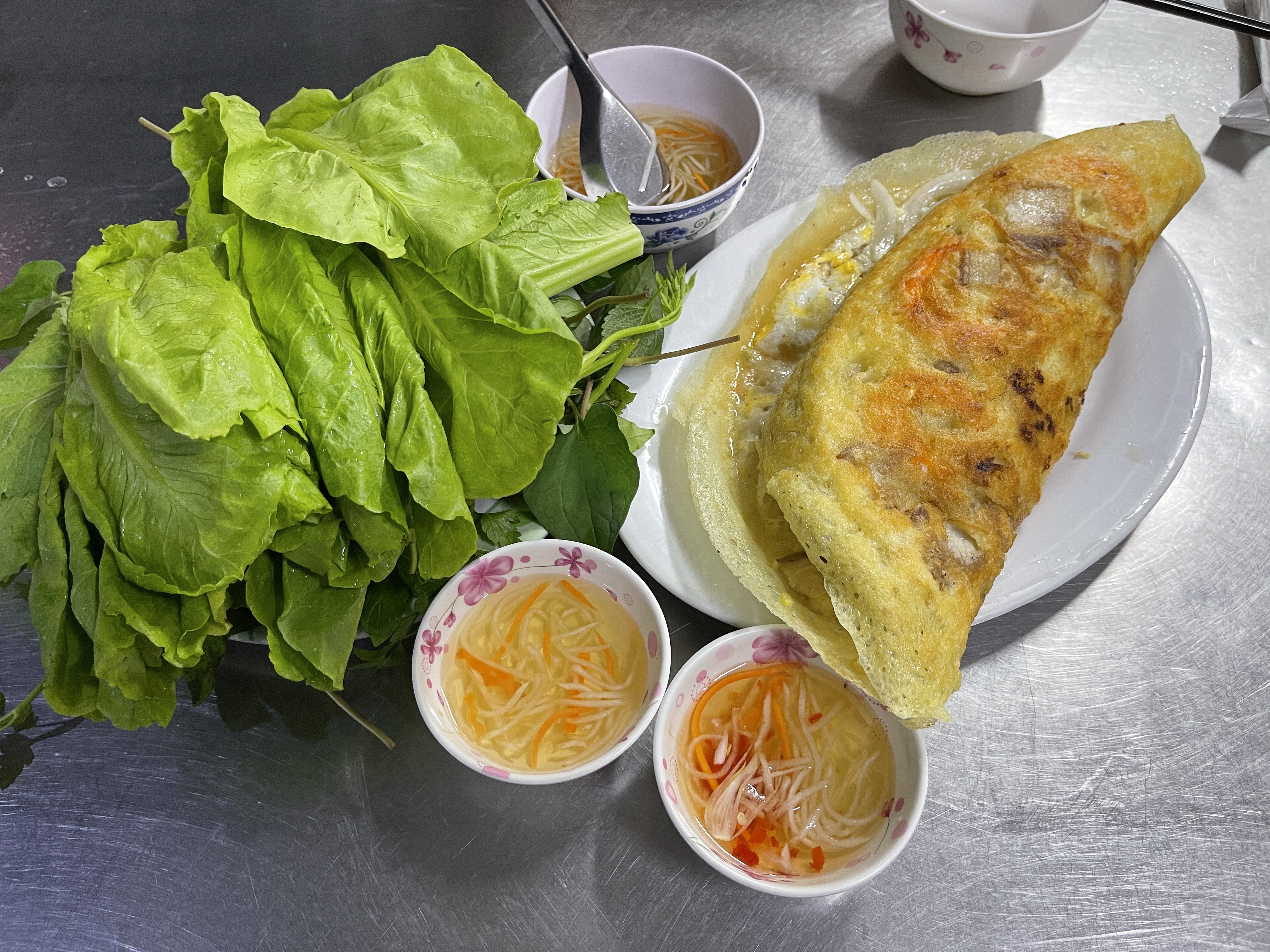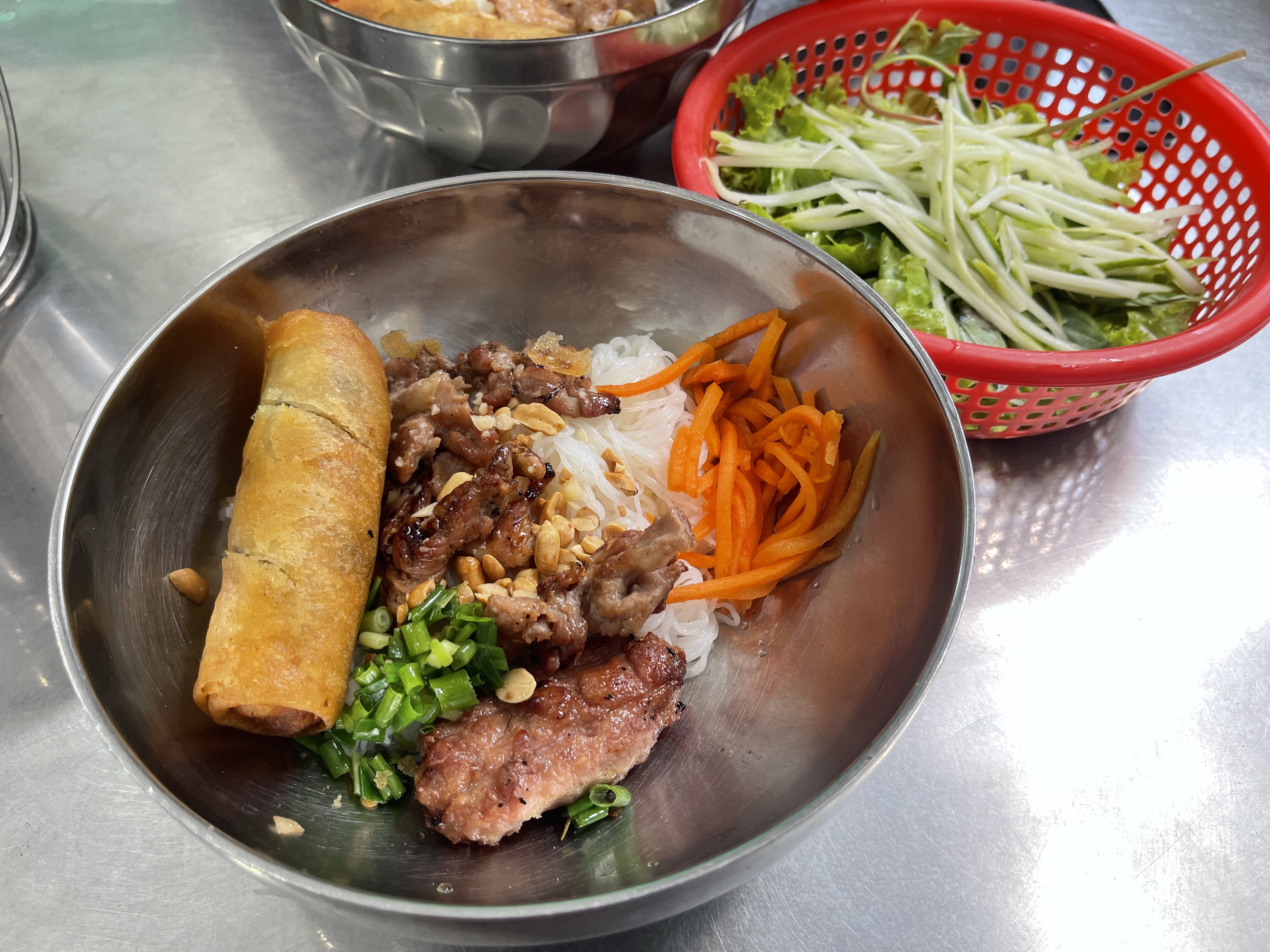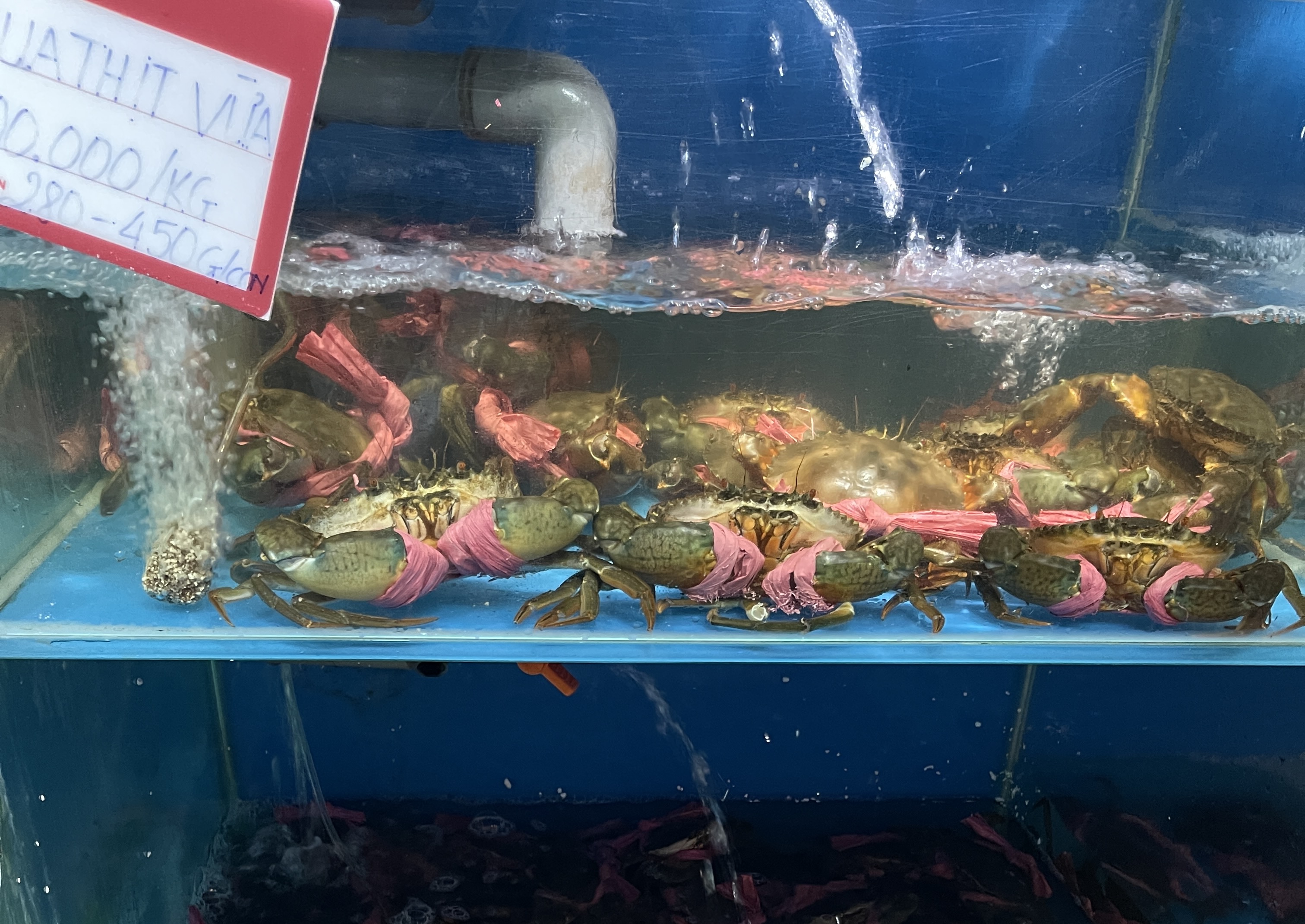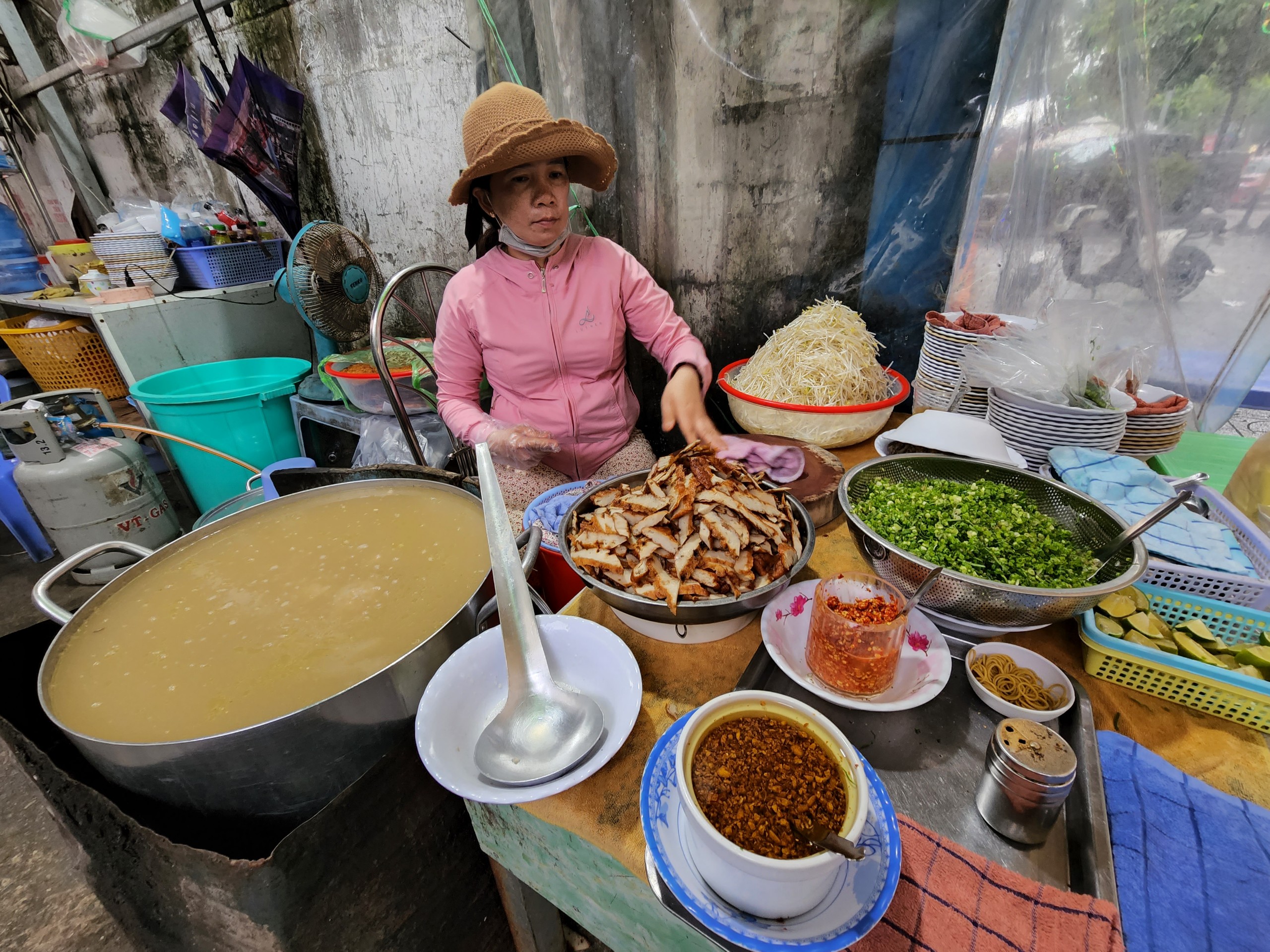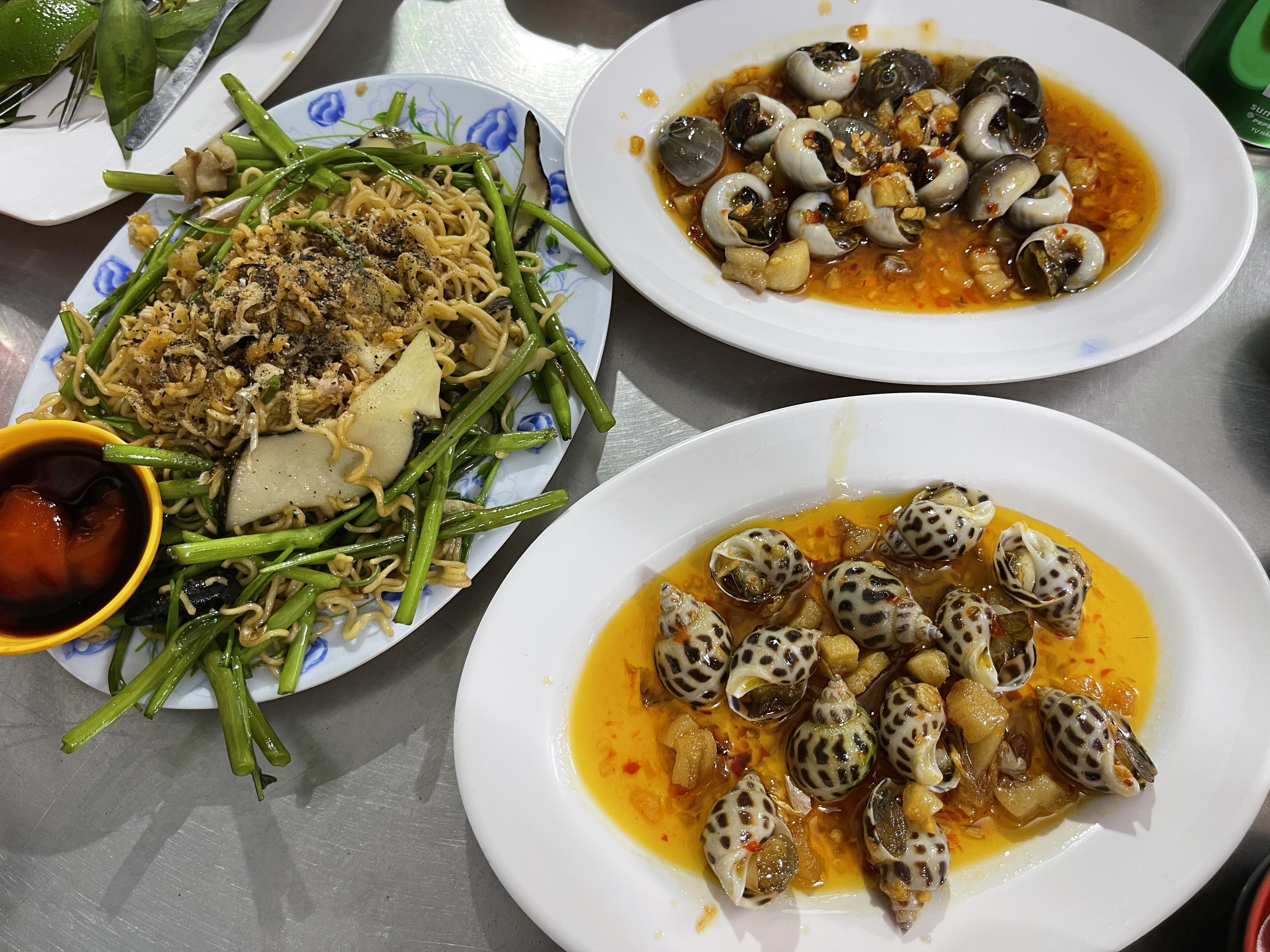Editor's note:The story is written by Ray Kuschert, an Australian, who has been living in Ho Chi Minh City for more than ten years. He eats street food daily and at bars and local restaurants at least two or three times a week. Kuschert believes "good people sell good food and they operate based on their reputation."
There was once a widely held belief that eating food anywhere in Asia was guaranteed to offer illness and stomach upsets. But times have changed and Vietnam is now a very different country when it comes to eating food on the street and in restaurants.
Let’s all face the fact that science is science. Bacteria and all those small things are everywhere. And when you visit any country in the world you will be exposed to a new set of bugs that need to get into your system so that you can adjust to the new community, climate, and food. But this is a far cry from the widely held myths about food in Vietnam being unsafe.
With the modern and progressive culture that embraces Vietnam, it is time we addressed these old myths and ended them forever, as Vietnam is no longer a place of high risk when it comes to food consumption.
Myths that are no longer true in Vietnam:
|
|
| Veggies are served with 'banh xeo' (sizzling crepes) at an eatery in District 1, Ho Chi Minh City. Photo: Dong Nguyen / Tuoi Tre News |
Don’t eat salad – WRONG!!! Salad is an uncooked product that is washed using local water. The idea is that the salad contains traces of local water that is highly dangerous to human consumption. This is just not true. The water in Vietnam, and in particular in the major centers, is of a good standard. Some small pockets may still be using old pipes which may cause minor concern but, generally, the water is good and eating salads and other raw products is generally acceptable in Vietnam. I personally eat salad and bun thit nuong (noodles topped with grilled pork) many times each week and I never have any issue.
|
|
| A bowl of 'bun thit nuong' (noodles topped with grilled pork and fried egg roll) is served at an eatery in Tan Phu District, Ho Chi Minh City. Photo: Dong Nguyen / Tuoi Tre News |
Chicken and duck are infected with salmonella – Wrong!!!Local poultry is often processed the same day as it is consumed. In fact, it may be just a few hours between processing the animal and eating it, so, in most cases, the food is fresh and safe to eat for foreigners. My only experience of illness from chicken actually came from a brand name restaurant chain that uses Western processes to manage food safety.
Meat is not refrigerated – True!! In many parts of the country, meat is not refrigerated and is sold on the street and in markets. It is also processed, sold, and cooked within a few hours so the meat you eat is very fresh and good to consume.
Don’t drink the water - PARTLY TRUE. Whilst the water is considered quite good across most of Vietnam, simple filtered water is a much safer option when drinking fresh water. I will often boil my water and carry it with me, or use the in-line filter at my office to drink good quality water which is from the tap. Essentially, it is no different to what I would experience back in my home country so I use the same precautions and processes as I do in Australia.
Seafood is mixed with chemicals to make it look fresh - Wrong!!! The seafood industry in Vietnam is a massive industry that not only services the country, but exports to countries all over Southeast Asia and the rest of the world. Standards are set to meet international import rules of some very strict markets like the European Union and Australia. Most seafood in local restaurants is kept live where possible and served to you only minutes after being processed and cooked. In my experience, Vietnam has some of the freshest and cleanest seafood in the world. And, whilst there have been reports in the past about seafood, modern Vietnam is a very different place with laws, checks, and testing to ensure seafood quality.
|
|
| Live crabs are kept in tanks before being served at a restaurant in Binh Thanh District, Ho Chi Minh City. Photo: Dong Nguyen / Tuoi Tre News |
One of the big challenges when coming to Vietnam is to know where it is ok to eat and where to avoid.
My rule is pretty basic and logical. “Eat where you see local people eating.” There is a lot to this simple rule but never eat on the street or in a restaurant that is empty when other restaurants around have many people dining at the same time. Vietnamese people will not give bad restaurants or street sellers a second chance, so use the local knowledge and follow the crowd. Also, locals will often tell you where to eat, so use their advice if you happen to chat to someone.
|
|
| A woman sells congee topped with fish cakes on Phu Quoc Island off Kien Giang Province in Vietnam's Mekong Delta. Photo: Dong Nguyen / Tuoi Tre News |
Another thing to consider is that bigger is not better. The idea is that just because it is a popular international brand, your food safety is assured. This is not correct and my experience is a local seller will often deliver much fresher, cleaner, and safer food.
Don’t be turned off by dirty-looking restaurants or street sellers. The appearance of a small operator does not have a direct correlation to the quality of the food. Some of the most unattractive-looking places that I have visited have ended up being my best experience in culinary delights. Just look at the food on offer and how many people are eating at the time you arrive. As long as the food looks good and many people are eating, then there is a really good chance the food is great and the seller has a good reputation.
Another strange experience for Westerners is the idea of throwing food on the floor after eating. Seafood shells, meat bones, tissues, and all kinds of leftover food items are often thrown on the floor of an eatery. It looks awful but it is actually very logical and safe. The idea is that the unwanted food items don’t need to be close to the fresh food and the best place for them is on the floor. At the end of the meal they are all swept up and disposed of hygienically. This means all your fresh food is safe and protected from any pathogens making contact with it when it arrives at your table, so embrace the culture and enjoy it.
Eating on the street also can pose challenges for some travelers. This custom is very different to most Western countries. However, eating on the street is a simple and safe way to down snacks and meals. All items that are used are clean and the food is cooked and preserved safely.
|
|
| Shellfish dishes are served at an eatery in Phu Nhuan District, Ho Chi Minh City. Photo: Dong Nguyen / Tuoi Tre News |
Vietnam has a set of laws placing requirements on business owners to ensure safe and consumable food for the eating public. Failure to comply in Vietnam results in a range of penalties just like you would find in your country. And from time to time, there is a report of a business being fined, or worse, for breaching these laws. However, with 100 million people across the country, more than 60,000 restaurants and possibly double the number of street vendors, the number of reported incidents per year is very low. There can be no other conclusion than that the Vietnamese food industry is in a good position.
I have not found any difference in my health after almost a decade in Vietnam. I eat street food daily and I eat at bars and local restaurants at least two or three times a week. I am very confident of the quality of food in Vietnam and I suggest that you embrace the food culture whilst traveling in this amazing country. Don’t let the false fear of extreme illness stop you from tasting some of the best food in the world. I can’t promise that every vendor across the country is perfect but in my experience good people sell good food and they operate based on their reputation as well as on the quality and safety of every meal they prepare.
Get out and enjoy something special. Take the road less traveled and have a meal that you will never forget somewhere in Vietnam soon.
Like us on Facebook or follow us on Twitter to get the latest news about Vietnam!




